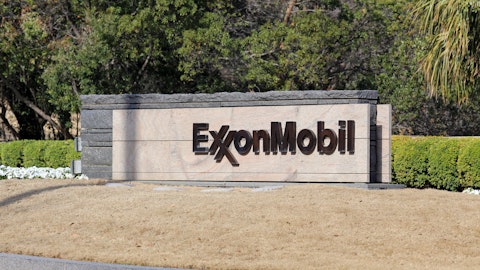In this article, we discuss the top 5 stock picks of Mark Kleiman’s Factorial Partners. If you want our detailed analysis of Factorial Partners’ history, investment philosophy, and hedge fund performance, go directly to Top 10 Stock Picks of Mark Kleiman’s Factorial Partners.
5. Pfizer Inc. (NYSE:PFE)
Factorial Partners’ Stake Value: $3,602,000
Percentage of Factorial Partners’ 13F portfolio: 2.92%
Number of Q2 Hedge Fund Holders: 71
Pfizer Inc. (NYSE:PFE) develops, manufactures, markets, distributes, and sells biopharmaceutical products around the world. Factorial Partners added Pfizer Inc. (NYSE:PFE) to its portfolio during Q2, acquiring 68,700 shares worth $3.6 million, representing 2.92% of its total holdings.
On July 8, Morgan Stanley analyst Terence Flynn reduced the firm’s price target for Pfizer Inc. (NYSE:PFE) from $52 to $49 after modifying projections ahead of the company’s upcoming Q2 earnings report, while maintaining an ‘Equal Weight’ rating on the shares. Companies that can provide revenue growth in the second half of the decade, according to Flynn, are best positioned among the group, and he expects biopharma sales to remain resilient even if economic activity slows.
Pfizer Inc. (NYSE:PFE) declared a $0.40 per share quarterly dividend on June 23, payable on September 6 to shareholders of record as of July 29. Pfizer Inc. (NYSE:PFE) shares deliver a dividend yield of 3.21% as of August 11.
According to Insider Monkey’s Q2 data, 71 hedge funds were long Pfizer Inc. (NYSE:PFE), with combined stakes worth $2.8 billion. Kahn Brothers is a major stakeholder of the company, with 1.04 million shares worth $54.9 million.
Here is what ClearBridge Investments Value Equity Strategy had to say about Pfizer Inc. (NYSE:PFE) in its Q4 2021 investor letter:
“While the level of general turnover abated as we progressed through 2021, it remained high in one area: post-COVID-19 recovery plays. The concept behind this investment thesis was, and still is, straightforward: with the advent of effective vaccines, the path from pandemic to endemic is just a matter of time. As this transition occurs, the estimated excess savings of over $2 trillion built up on U.S. consumer balance sheets will unlock dramatic pent-up demand for experiences, especially global travel. This investment case seemed especially compelling when the Pfizer vaccine positively surprised markets in November 2020. As a result, we made post-COVID-19 stocks (which were trading well below our estimate of recovery value) a sizable theme within the portfolio. We understood this to be a more aggressive tilt in positioning because it required a major improvement in demand to catalyze fundamentals and drive price toward higher business values. While we accepted that recovery would not be smooth and that it would take time to deploy vaccines both domestically and globally, we decided that recovery was the logical path of least resistance and we were being well compensated for these risks.
What we did not account for, however, was vaccine hesitancy and the risk of further infection waves. As a result, the first variant wave, Delta, was a negative surprise to both the market and our team. When the risk surfaced, we immediately updated our probability-driven models and debated how we should react. The resulting conclusion was that the recovery would be delayed and that we should reduce our exposure quickly, subsequently targeting the most aggressive recovery stocks such as cruise lines. We again acted swiftly and decisively to the positive surprise that Pfizer had delivered a high-efficacy antiviral COVID-19 pill. This pill should greatly reduce COVID-19 severity risks globally, increasing the probability of a global travel recovery in 2022. While this is still true, the emergence of the highly mutated Omicron variant set off another infection wave which spurred us to again act quickly and further reduce our risk exposure. This back-and-forth may sound exhausting, but it highlights our compulsion to act if we determine a surprise has a large enough impact on the probabilities that power our valuation-driven investment cases.”





